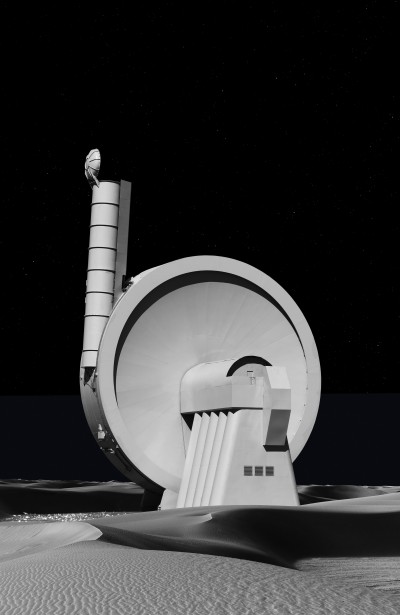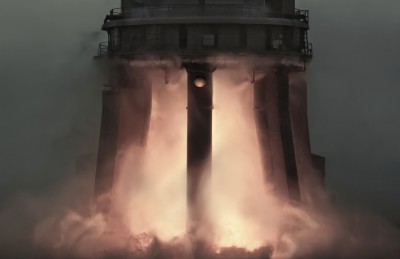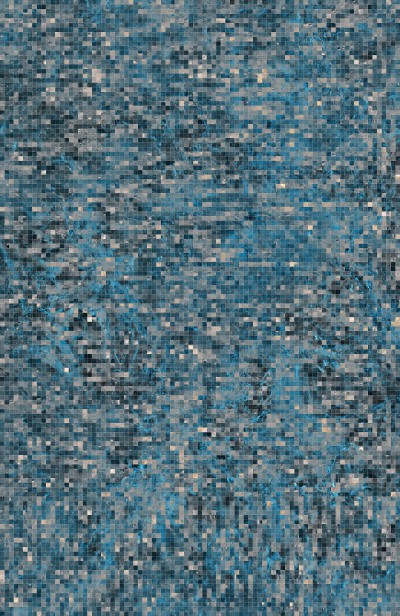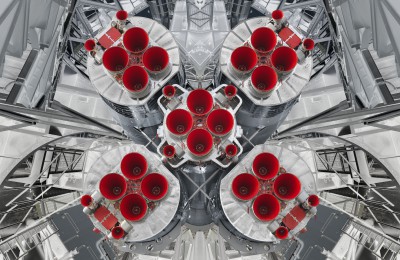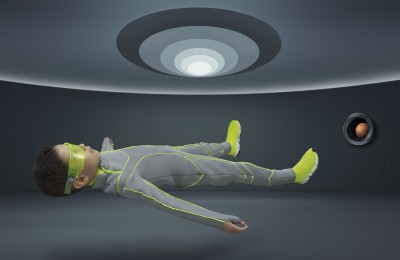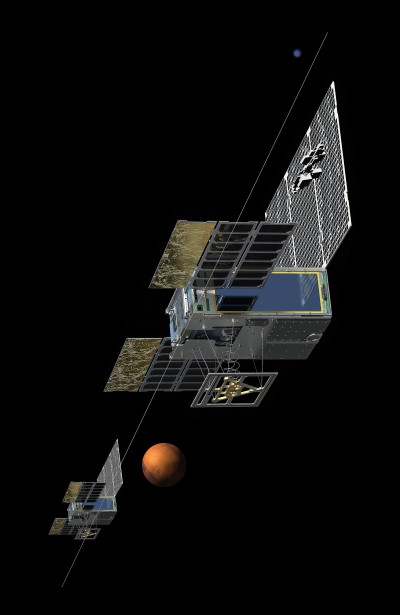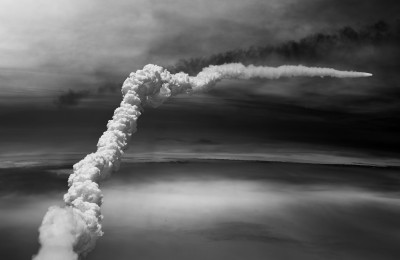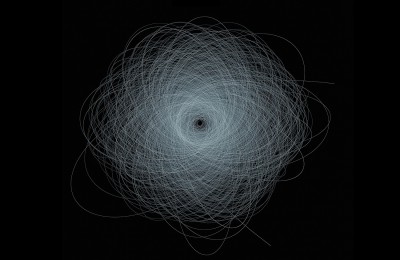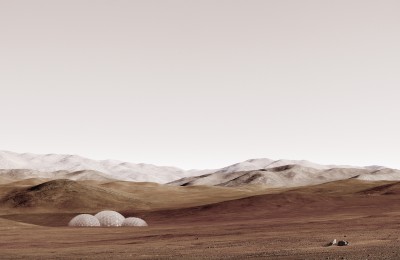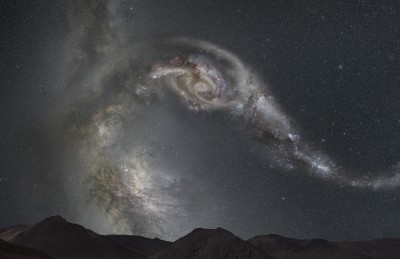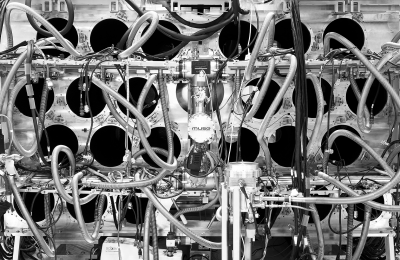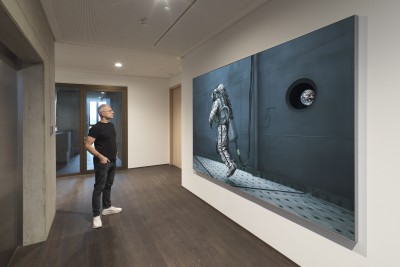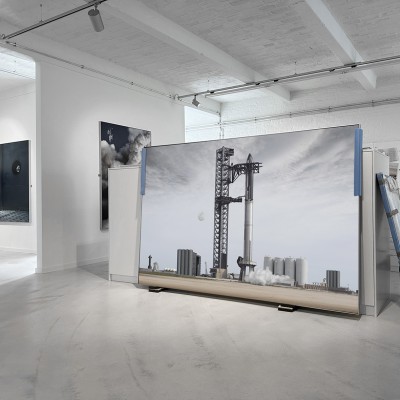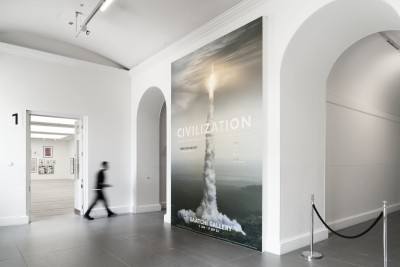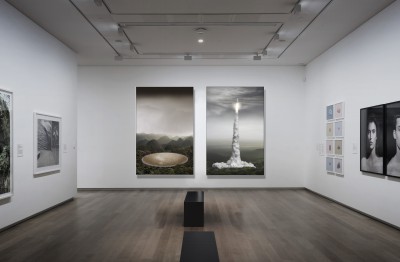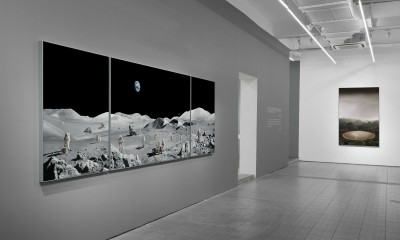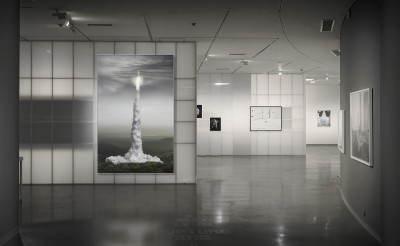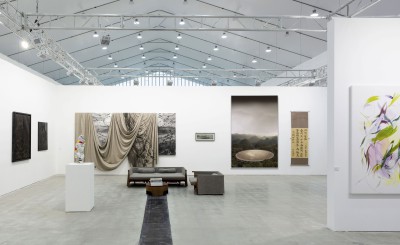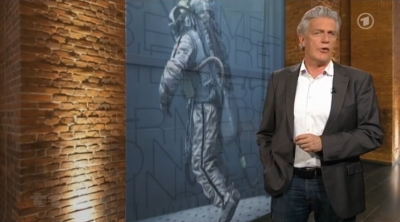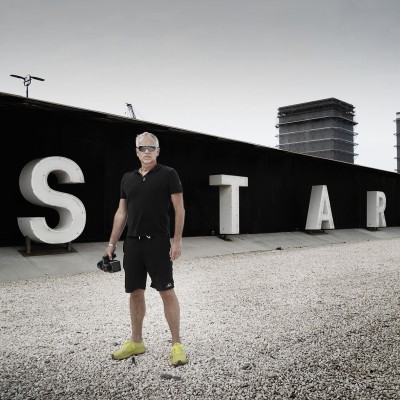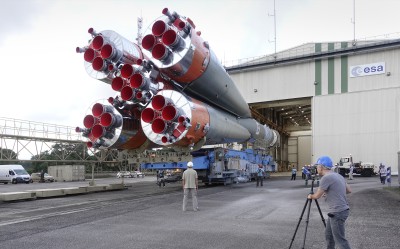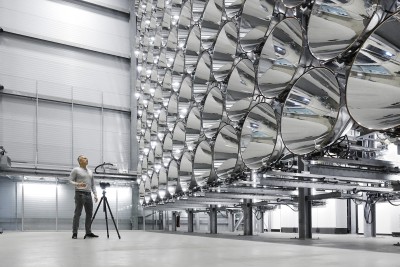
kinetic drift
Format 1: 132 x 202 cm / 52 x 79.5 in, edition of 6 + 2 AP
Format 2: 67 x 102 cm / 26.3 x 40.2 in, edition of 6 + 2 AP
Hybrid photography, archival pigment print, aludibond, diasec, custom-made aluminium frame
“kinetic drift” explores the process of spatial disorientation, which occurs in a microgravity environment. Commercialization of outer space may depend upon an increased human presence in orbit. Sojourns in zero gravity environments cause disruptions of the human vestibular system, which is responsible for our sense of balance and spatial orientation. Deprived of a stable gravitational reference point, astronauts experience arbitrary and unexpected changes in their sense of verticality. Perspectives that are thoroughly familiar when viewed from one point may become unfamiliar when viewed from a different up-down point of reference.
The artwork "kinetic drift" draws on a Zero-G flight taken by Michael Najjar in October 2013 at the Yuri Gagarin Cosmonaut Training Center in Star City, Russia. The artist himself is performing the kinetic drift during a parabolic flight in a Russian Ilyushin IL-76. Over 10 periods of floating in weightlessness and spatial disorientation, he took a series of photos of the space around him. He used them to make a digital reconstruction of the spatial environment, building a fictive space exemplifying the loss of familiar spatial axes. The center of the composition shows the artist himself in a state of weightlessness.

